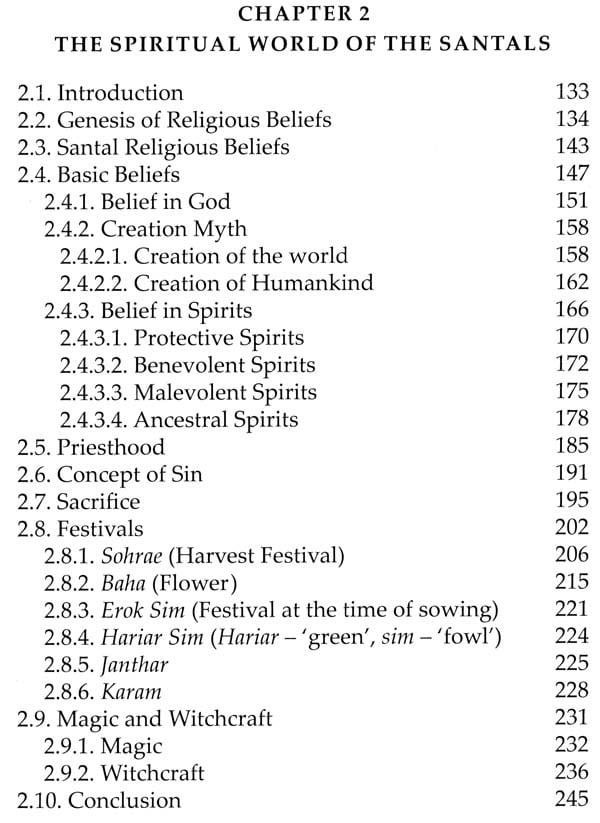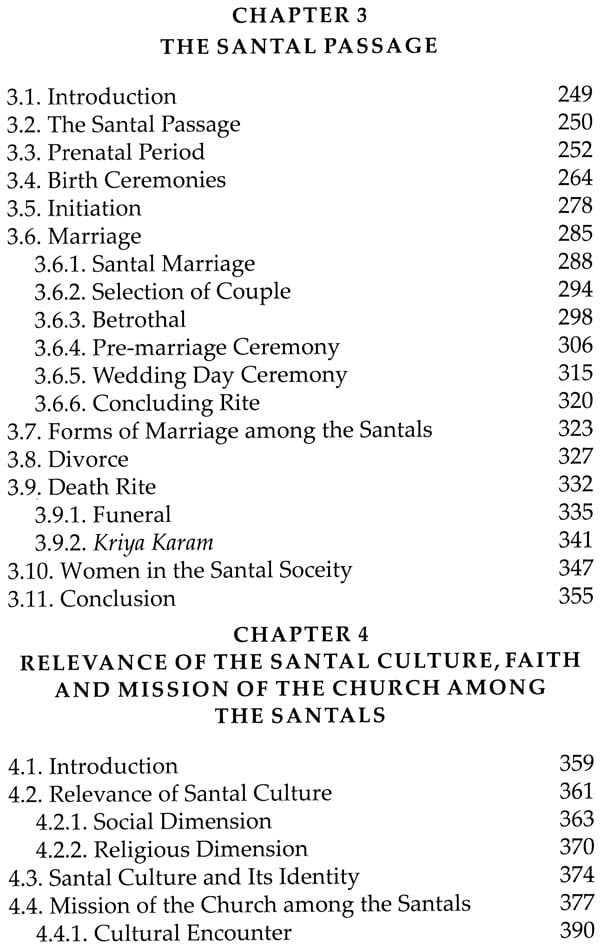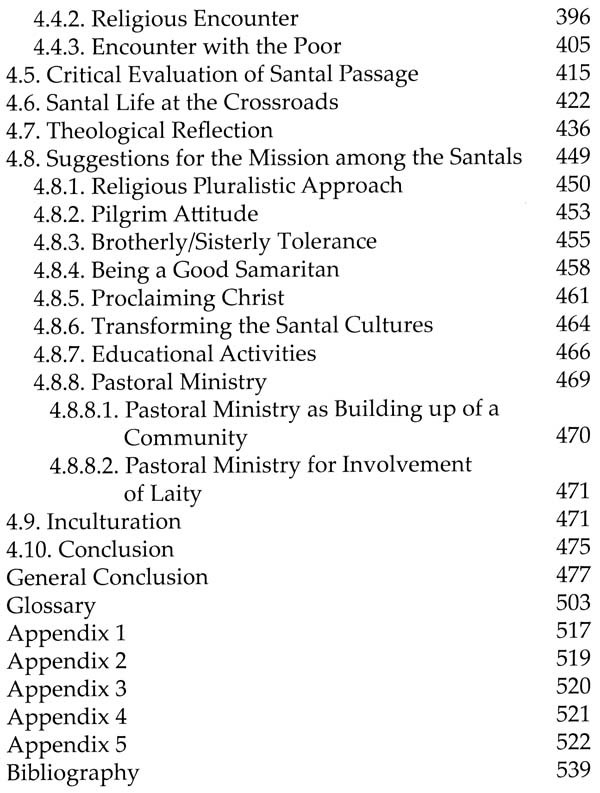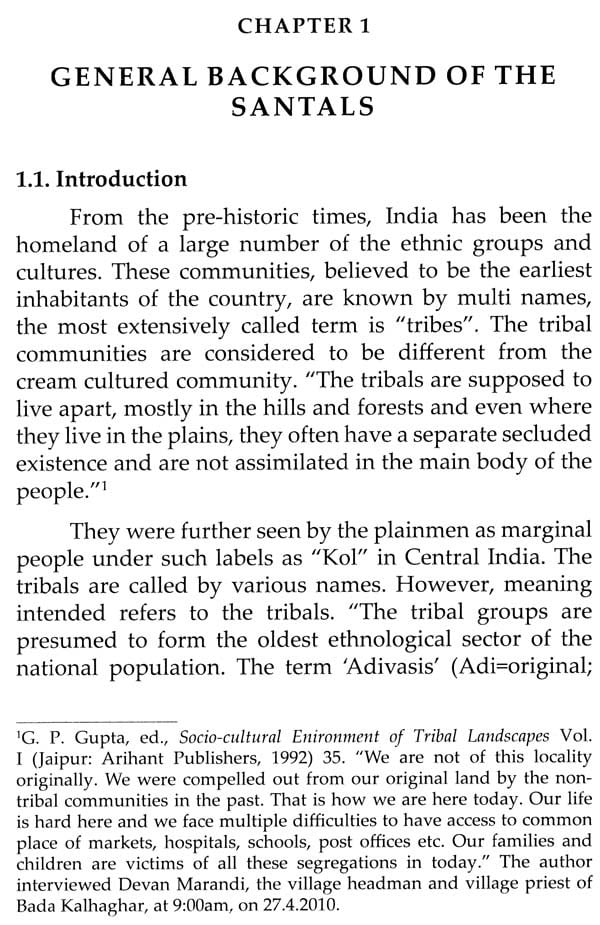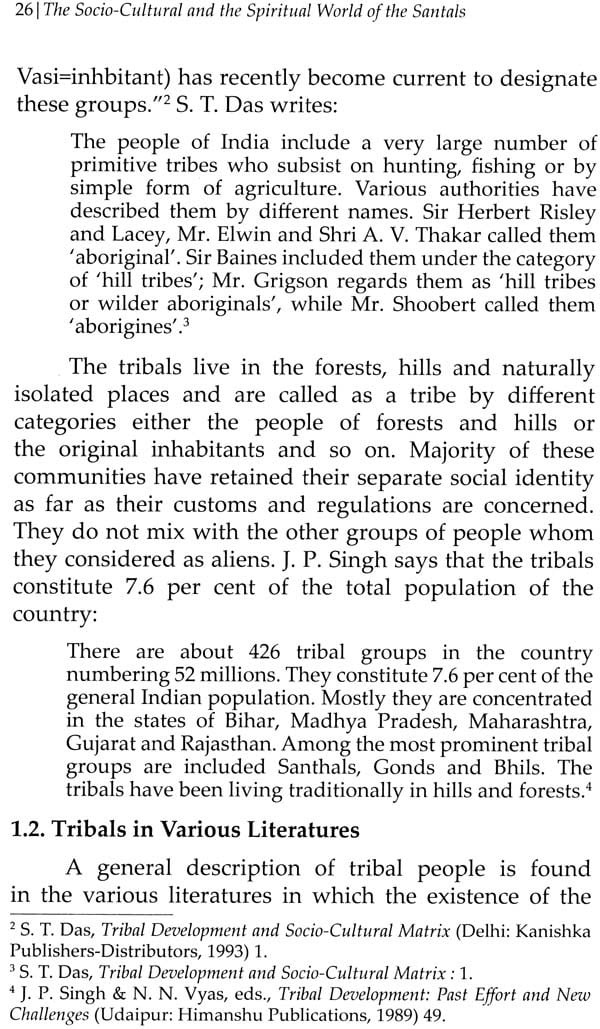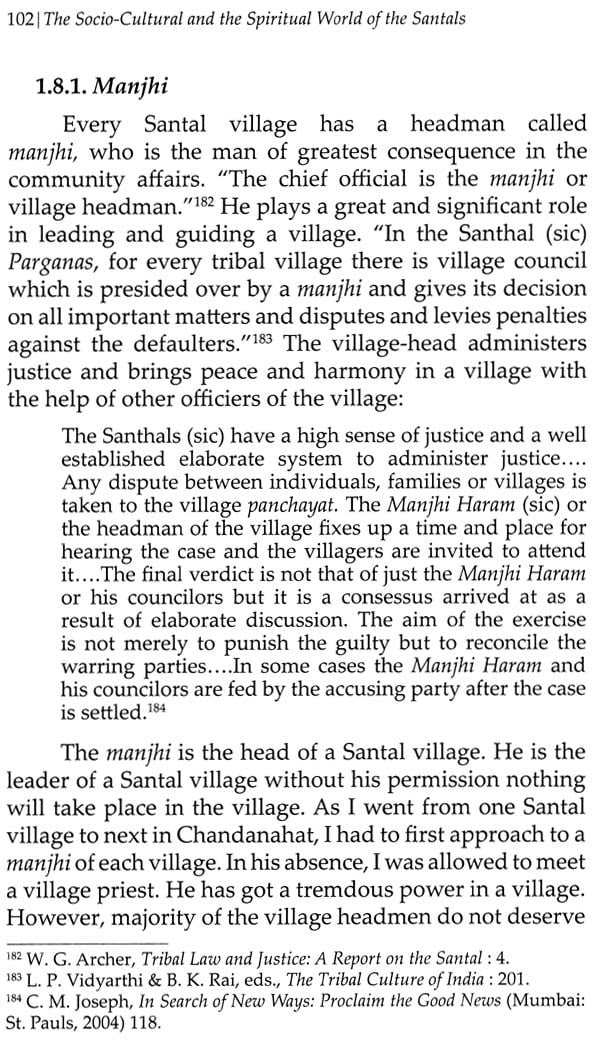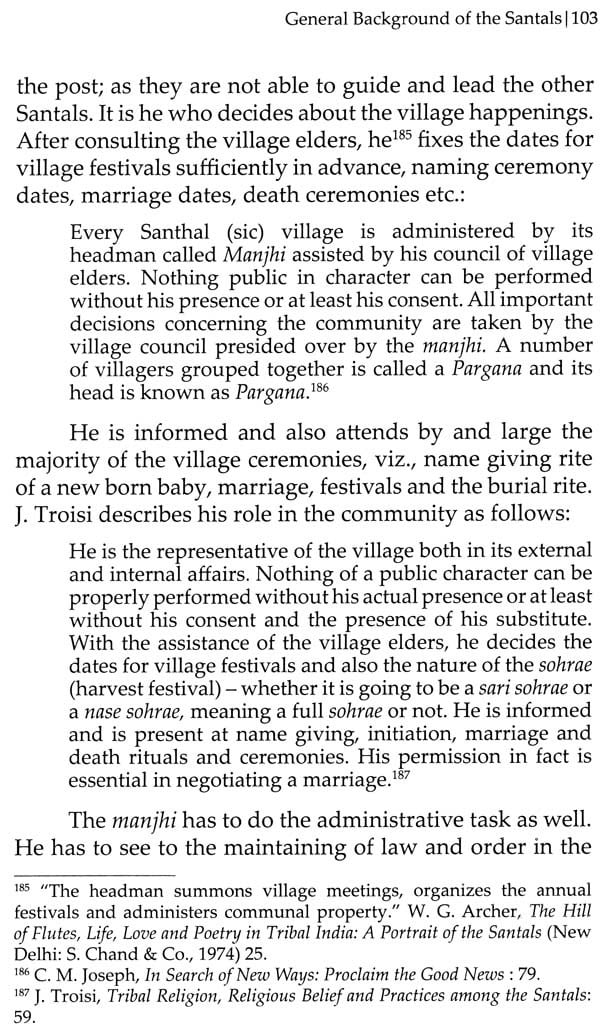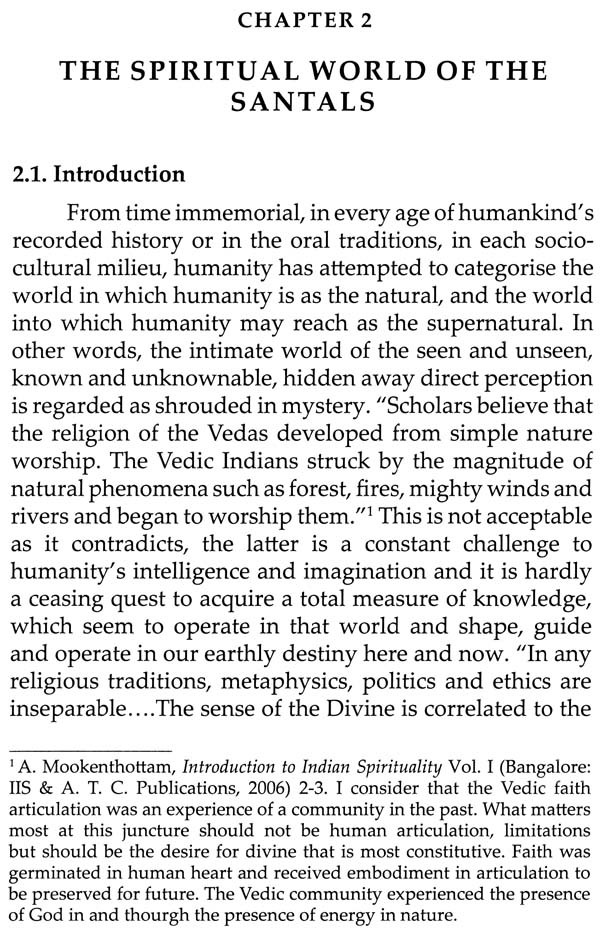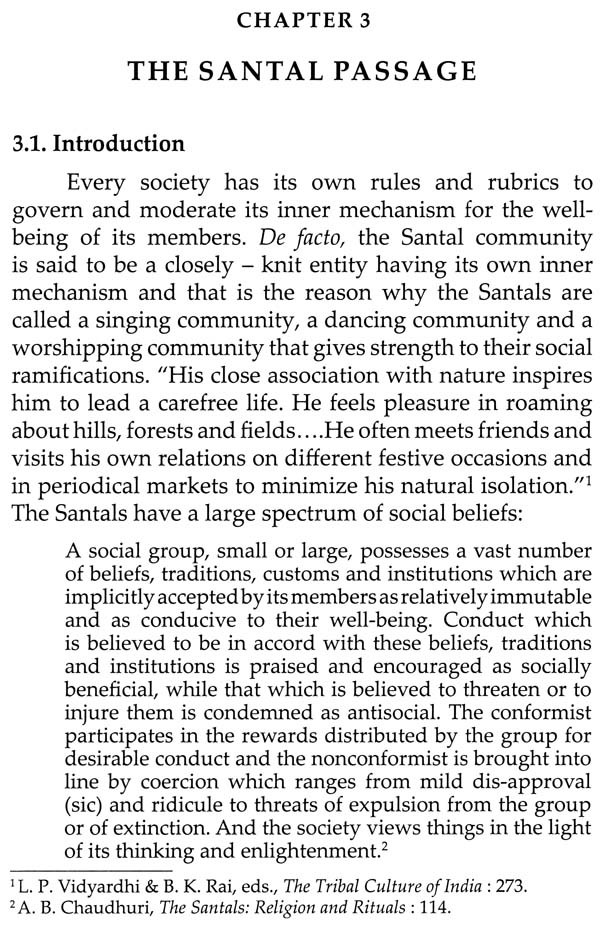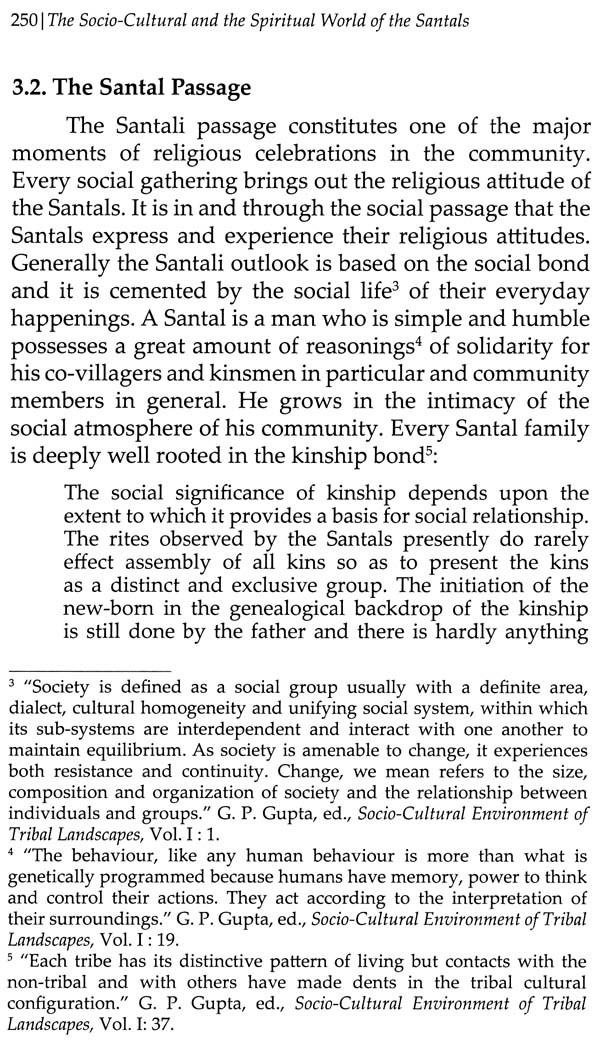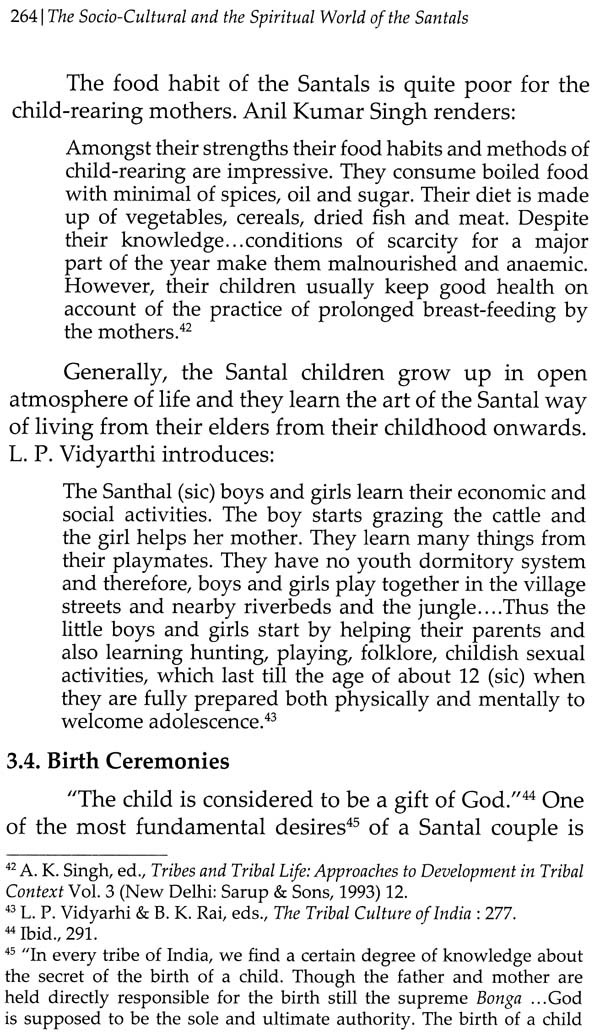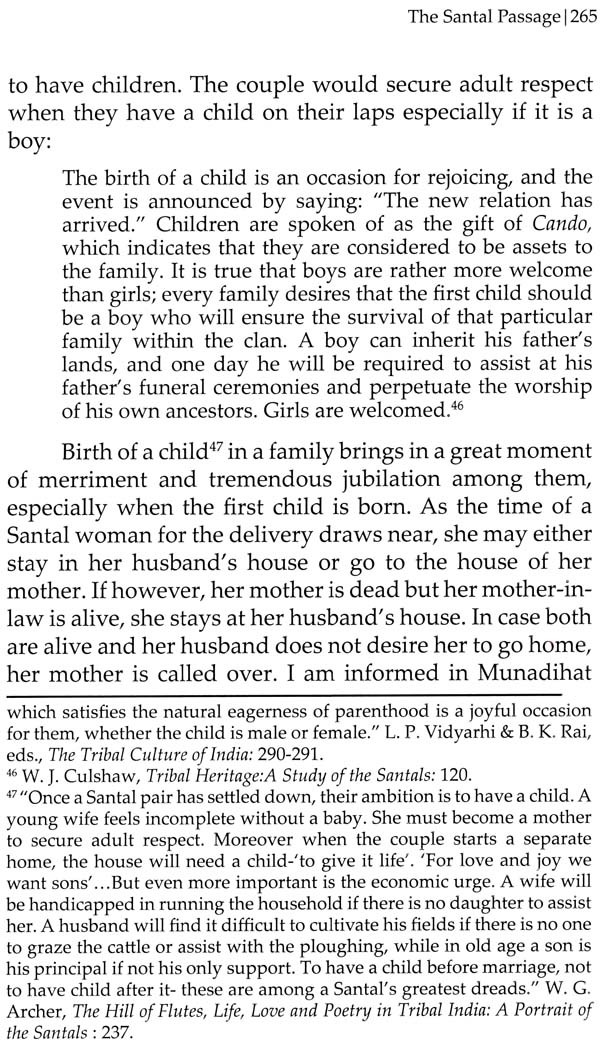
The Socio-Cultural And The Spiritual World Of Santhals: A Christian Approach To The Santhals
Book Specification
| Item Code: | AZA611 |
| Author: | Santosh Kumar Mahilanga crs. |
| Publisher: | Dharmaram Publications, Bengaluru |
| Language: | English |
| Edition: | 2018 |
| ISBN: | 9789384964535 |
| Pages: | 570 |
| Cover: | PAPERBACK |
| Other Details | 8.5 x 5.5 inches |
| Weight | 640 gm |
Book Description
Rev. Fr. Santosh Kumar Mahilanga belongs to the Clerics Regular of Somasca (CRS). He holds a Master of Theology in Spirituality and Counselling from Dharmaram Vidya Kshetram (DVK), Bengaluru. The present book is the doctoral dissertation, he defended successfully at St. Peter's Pontifical Institute and Indian Institute of Spiritutality, Bengaluru, 2012.
Social life is a structured system within which human beings live, by and large, in an ordered fashion. Socio-cultural systems are characterized by elaborated conceptual systems and systems of behaviours and beliefs. Social systems order social life and guide individual conduct. Members of society derive their notion of self, their ideas about proper conduct and interpersonal interaction from these conceptual systems. These systems provide frameworks for grasping the life-world of people and offer models for explaining events. Certain implicit principles determine the form of conceptual systems and pattern of beliefs and behaviour. A correct apprehension of ourselves and our world requires an understanding of these implicit principles. The Santals have their own rules and rubrics towards life.
This social passage of life is a very important conceptual system among the Santals. It governs as their traditional social system. It reflects not only different ways of seeing reality but also different ways of ordering their lives and the world around them: how they relate and how they interact with one another. Yet they are certain about the specific ways in which they mould their beliefs and lives.
Their oral traditions and their life-styles provide the cultural passage of the Santals a distinctive flavour. The Santals, a colourful tribe, are devoted to music and dance and they love the open hills and the forests. Excellent in reclaiming lands, they are extremely hardy. A cheerful lot if they have just enough to eat and drink, they give a lot of emphasis to religious and social ceremonies. They are madly in love with their free life along with their axe, bows and arrows. They would consume almost all kinds of animals, both domestic and wild, birds, fish, and jungle tubers, leaves and fruits. They love relaxing, and would dance throughout the night with music. The Santals' social systems are regulated by their own tribal laws, and they are under strict discipline of the village-council at the social and at the religious levels. They possess a religious belief system which regulates their daily lives.
The Santals are neat and clean people. It is really a great pleasure to see their 'houses' with plastered and painted mud walls. They have idea of Supreme Being (God) and they live in complete harmony with the surroundings with no temples for worship. The Santals' surroundings, the hills, the springs, and the sacred groves are all objects of their reverential fear. They have a harmonious life under the belief in the supernatural influence of the bongas and witches. They firmly and faithfully believe in a number of good and bad spirits with the supreme deity known as the Thakur Jiu or Thakur Baba. The Santal community is one of the tribal communities in India. It is further divided into many sub tribes. The Santals have their own folk tales to narrate.
Unity in multiplicity is an old attribute to Indian society. In this mulitiple society the varied components are interwoven in such a manner that they present altogether a configurational entity and raise an image that we call as India, Bharat or Hindustan. Every component, be it a person, a community, an organization, a caste, a race, an institution, a linguistic sect, a culture trait has, its definable as well as identifiable status and role which ultimately make the integration of Indian society and culture possible. India contains multifaceted cultures and faiths. "India is a multi-lingual, multi-cultural, multi-racial and multi-religious country rightly described as a melting pot or as a fishing net into which has been drawn peoples of all races, where through a strange alchemy, most of them became a highly mixed people interacting closely and contributing to the composite culture of the Indian people."Asia is the earth's largest continent... the most striking feature of the continent is the variety of its peoples who are "heirs to ancient cultures, religions and traditions".
In this socially and geographically diversified society, there are some regional pockets having such groups and communities that could not achieve socially sanctioned position in the broad spectrum of the society so far. Due to certain unavoidable reasons like geographical impediments, socio-cultural isolations, lack of communications and transportations such communities could not get any identifiable and definable position in the society and remained in a state of ghettoness for centuries. Indian society has been marked out by varieties of dimensions:
Indian society is distinguished for its diversity of cultures, languages and religions...we regard the diversity of religions and mutual interaction of religious traditions as a special blessing of our times that can contribute to the building up of an egalitarian society capable of overcoming the caste, creed, class, sex and gender based divisive forces.'
Society has been one of the fundamental topics of research from time immemorial. History presents an outstanding social and structural phenomenon of the people of this country. It is generally taken for granted that tribes in their entirety depict the panorama of primitive genesis to discover the depths of human civilization. However, in my opinion it is a quasi-complete de facto, rather it is an unsystematic and somewhat prejudiced enlightenment of facts of unknown history of the past. It is made known to the outside world by some group of people with vested interest. Moreover, they belong to the arena of the dominating sect as they have been for the past many centuries for the dehumanization with the sole motif of exploitation. Thus, we do not have clear cut knowledge of tribals today but the tribals have a good history to make us understand the world better. "The first occupants of India were probably Negritos, and elements of their belief, perhaps including the reverence for the pipal tree and possibly a primitive phallic fertility cult, both of which are found in the Andaman Islands, may have been perpetuated by the proto-Australoids, who were the next comers."
**Contents and Sample Pages**

